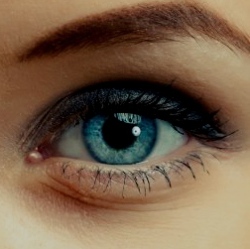
There may be more to contact lenses than meets the eye, according to a study in the journal Ophthalmology. In addition to correcting vision problems, these flexible lenses can be used to deliver drugs directly into the eyeballs of glaucoma patients, eliminating the need for self-administered eye drops.
Many scientists have already experimented with the concept of using contact lenses as a vector for medications to both prevent and treat eye diseases. But a common stumbling block past teams have encountered is preventing the drugged-up lenses from dumping medication into the patient’s eyes all at once, after contact with the cornea. A more mediated approach, in which lenses gradually deploy their palliative payload, is expected to produce better outcomes.
The new research, led by Massachusetts Eye and Ear Infirmary ophthalmologist Joseph B. Ciolino, focuses on the development of this kind of slow-release drug delivery system.
Ciolino and his co-authors created lenses lined with a circumference layer of latanoprost, a glaucoma medication typically administered as eye drops. The peripheral latanoprost was encased in slow-dissolving polymers, allowing for a steadier, continuous release into the eyes of the four monkeys that served as test subjects for the study.
The goal here is to boost prevention and management of eye diseases by simplifying the treatment process. Eye drops are notoriously underused by patients for a variety of reasons, from the pains associated with their use to sheer forgetfulness. As many as one in two patients prescribed eye drops does not follow through on the treatment plan. Drug-delivering contact lenses could counteract these high rates of eye drop truancy by bundling medication into a more familiar package.
"If we can address the problem of compliance, we may help patients adhere to the therapy necessary to maintain vision in diseases like glaucoma, saving millions from preventable blindness," said Ciolino in a statement.
"This study also raises the possibility that we may have an option for glaucoma that’s more effective than what we have today."
